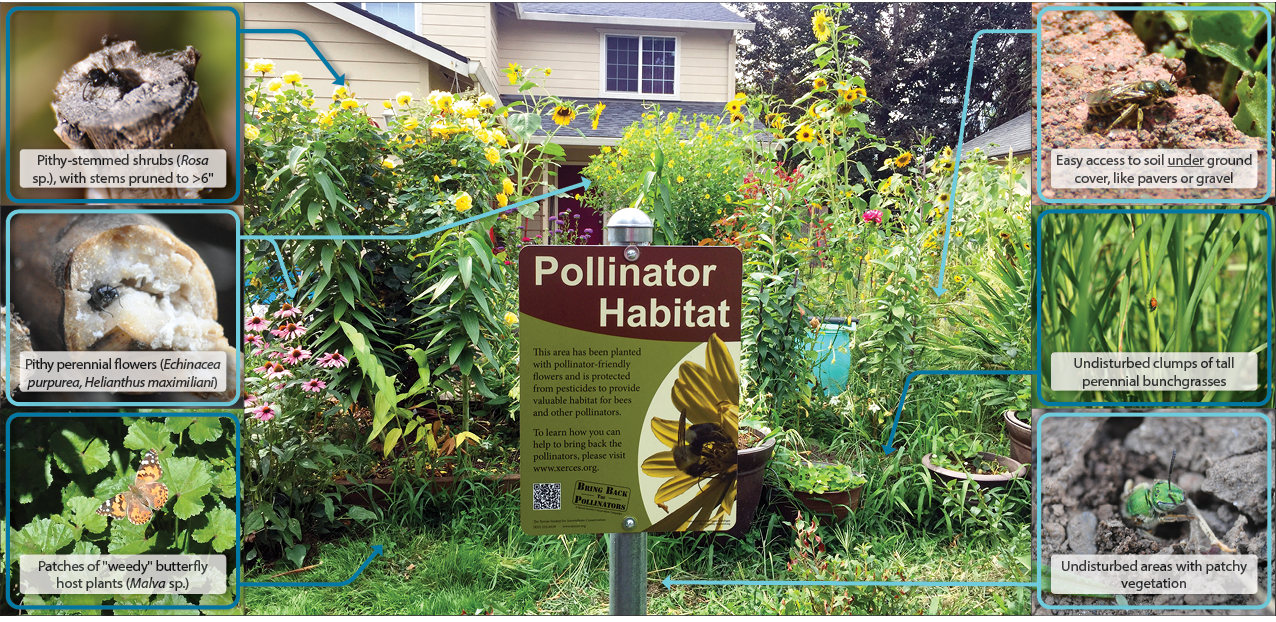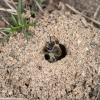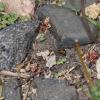When landscaping for pollinators, there’s a (very understandable) tendency to focus on flowers. Flowers provide essential pollen and nectar for bees and other insects, and also add vibrant color and ornate beauty to our yards and parks. However, flowers, alone, aren’t enough to meet the basic needs of pollinators. In order to help insects to build and sustain successful populations in our residential and developed landscapes, we also need to provide shelter for these animals, specifically by increasing the availability and quality of their nesting and overwintering habitat.
So, where DO insects make their homes? Given the astounding diversity in insects (even within “pollinators” and other more-narrow groupings), the answer isn’t simple. That said, there are a few running themes that are useful for gardeners, landscapers and wildlife enthusiasts to know about. Most bees and solitary (i.e., non-aggressive) wasps create small nests beneath the soil, or within dead plant stems or branches. Some bees and many other insects find or build cozy cavities within tree snags or logs, with different insects settling in and moving out as the wood transforms through various stages of decay. Other insects such as butterflies, moths, fireflies, lady beetles, and ground beetles seek shelter in places that offer protection from predators and the elements, such as leaf litter and piles of rock or brush. Similarly, bumble bee nests are often found under woody plants, tall grasses, brush piles, rock piles, or hidden among vegetation.

The center of this broken flower stem is plugged with neatly cut pieces of leaf, a sure sign that a leafcutter bee has created her nest down the hollow center of the stem. (Photo: Sara Morris.)
Unfortunately, manicured landscapes rarely leave enough of these “messy” habitat features to support pollinators and other wildlife. Retaining and incorporating as many of these features as possible into your landscape, rather than tidying them away, will help attract and support a diversity of bees and other beautiful insects.
Here at Xerces, we have recently developed a short guide, Nesting and Overwintering Guidelines for Pollinators and Other Beneficial Insects. This guide focuses on a variety of natural nesting habitat features that can be readily incorporated into most landscapes. Thankfully, most of the nesting needs of pollinators can be met with a few simple shifts in how we approach yard clean-up and other decisions in our landscaped areas:
- Save the stems
- Leave the leaves
- Redefine the “perfect” lawn
- Rethink how you use mulch
- Save a snag and “plant” a log
- Build a brush pile
- Build a rock pile or rock wall
- Provide a clean water source
- Install a habitat sign

Pollinators need year-round habitat, not only flowers. Let your neighbors know the "mess" is intentional by posting a pollinator or wildlife habitat sign. (Photos: Matthew Shepherd.)
Specific guidance on each of these categories is provided in the guide, including which insects use which feature, and tips and tricks to help ensure that it is as valuable as possible for the insects you are trying to support. For example, with regard to stem stubble, we suggest the following process:
- Leave your flower gardens intact over the winter. Standing seed-heads will provide food for birds and other wildlife.
- Prune dead stalks back in early spring, at a variety of heights between 8 to 24 inches. As you prune, you are creating new nesting sites for bees.
- Keep an eye on your stem stubble! Not all wildflower stems seem to have the appropriate size or structure for attracting nesting bees, so watch to find out what works in your yard. (In my own Minnesota yard, I have been delighted to see almost every cut stem of bee balm, anise hyssop, and rigid goldenrod occupied by small carpenter bees.)
It is important to note that our knowledge of bee nesting requirements is somewhat limited, and we’re still learning a lot about what plants are preferred by different types of bees across the country. In light of that, we are excited to announce a new community science survey that you can use to report your own observations of plant-use by nesting bees. Your contributions will help build our nesting-plant database, and be used to create regional lists of nesting plants that we will be releasing in the coming months. If you are interested in contributing to the survey, here’s what you need:
- An observation of a plant being used in a way that is clearly related to nesting (e.g., a plant stem being used by a nesting bee)
- Positive identification of your plant at the genus or species level
- Certainty that the observation you made was a bee (not another kind of insect
To help us learn more about where bees nest, please fill out the survey form.

Even very small urban plots can provide ample foraging, nesting, and overwintering resources to pollinators and beneficial insects if they incorporate a mix of high-value pithy-stemmed perennial wildflowers and shrubs, undisturbed bunchgrasses, and easy access to the soil. (Photos: Sara Morris.)
Compared to artificial nesting options such as bee blocks and bee hotels, natural nesting habitat features often better mimic the natural nest site density of insects, and also break down naturally with time, limiting disease issues. Moreover, natural nesting features often provide multiple conservation (and human) benefits. A pruned raspberry hedge, for example, can provide excellent nesting habitat for a variety of insects, along with abundant edible fruit for humans, and blossoms in springtime when pollen and nectar resources can be limited. Similarly, an appropriately-managed wildflower planting can provide nesting sites, pollen, and nectar for bees; host plants and overwintering habitat for butterflies; and abundant food for songbirds.
All parts of a plant can be valuable to insects, even after they have withered and browned and become less aesthetically pleasing to us. Remembering this can really go a long way in helping insects find what they need in our yards to make their homes.
Further Reading
Download a copy of the new publication, Nesting & Overwintering Habitat For Pollinators & Other Beneficial Insects.
Our Habitat Assessment Guide for Pollinators in Yards and Gardens will help you identify what habitat you already have.
To help us learn more about where bees nest, please fill out the survey form.



